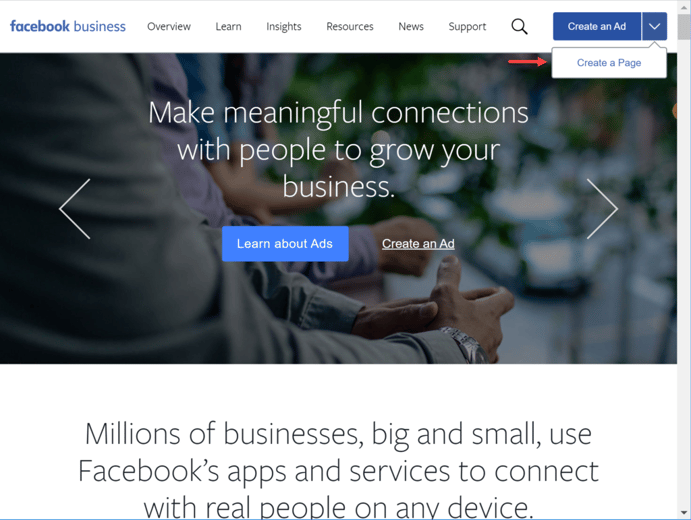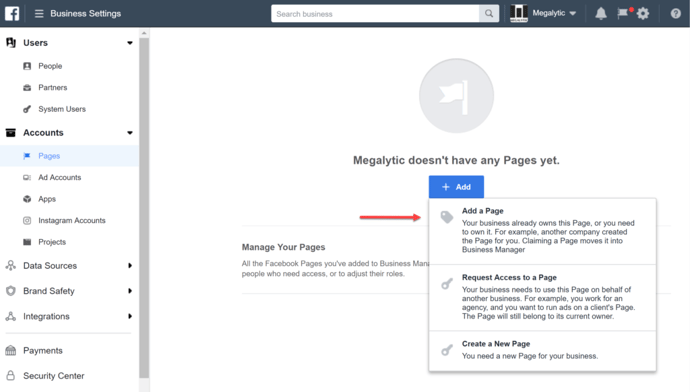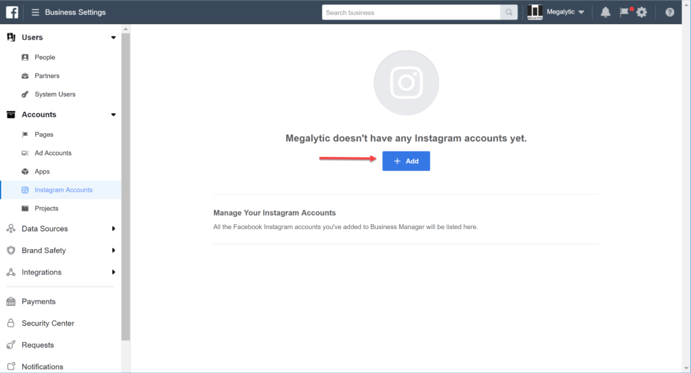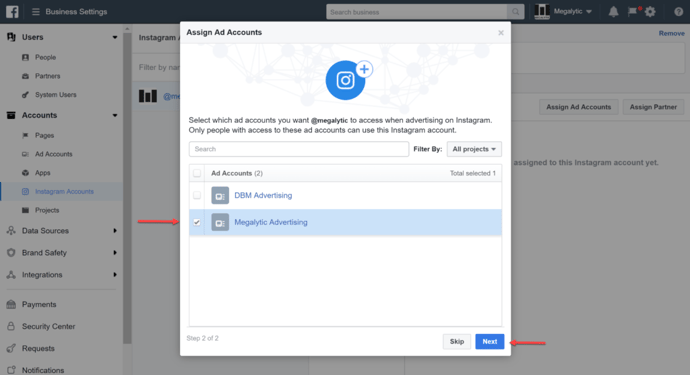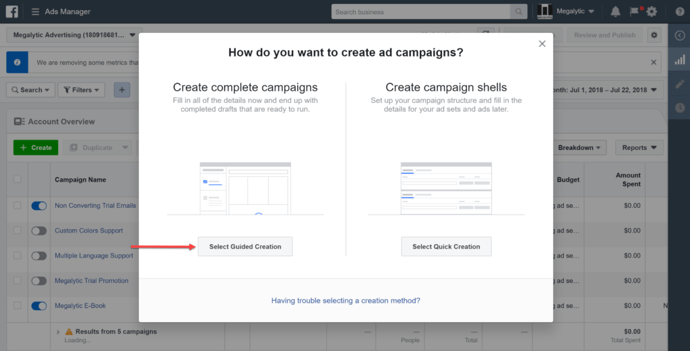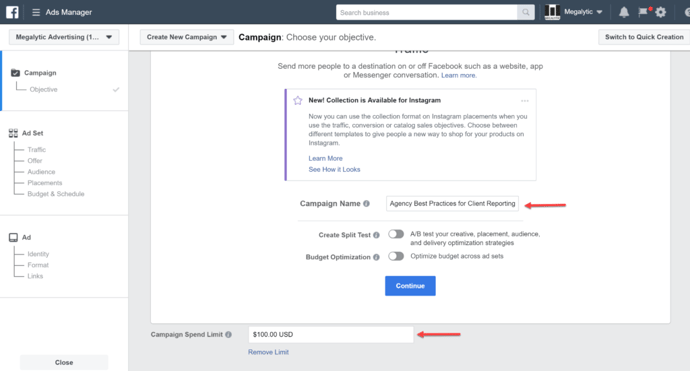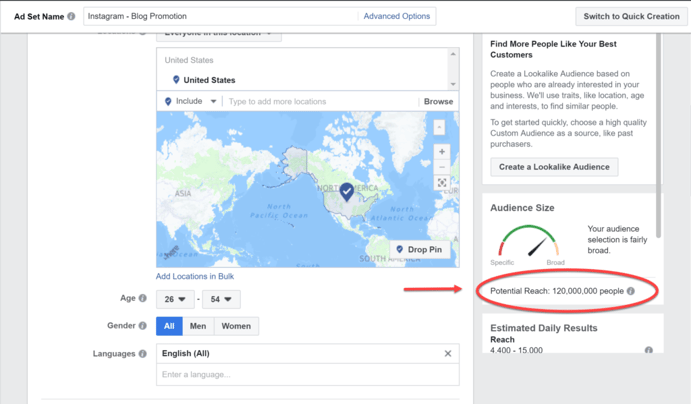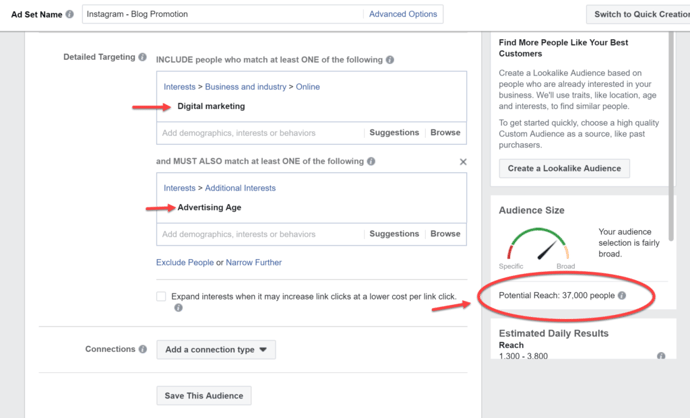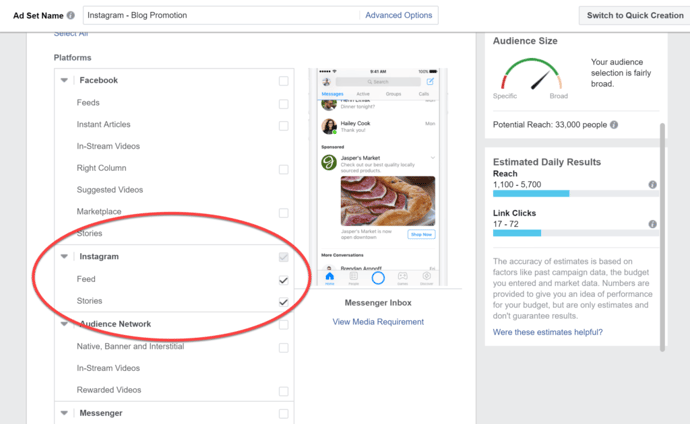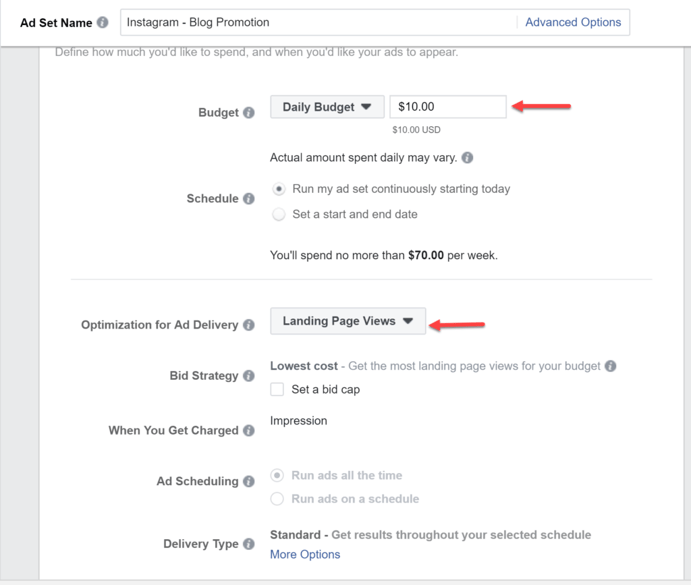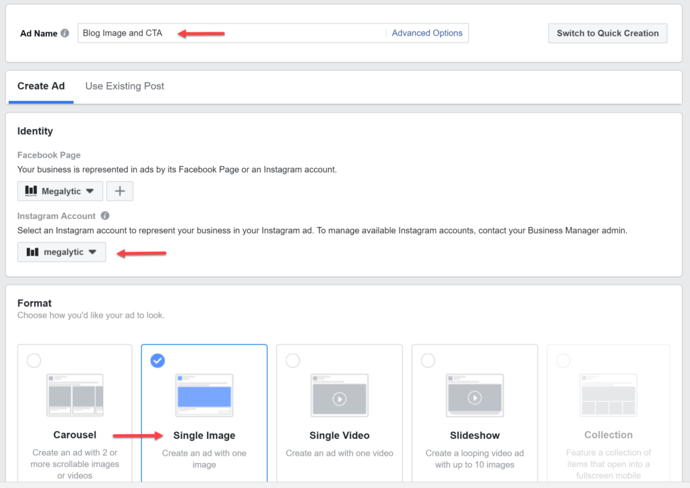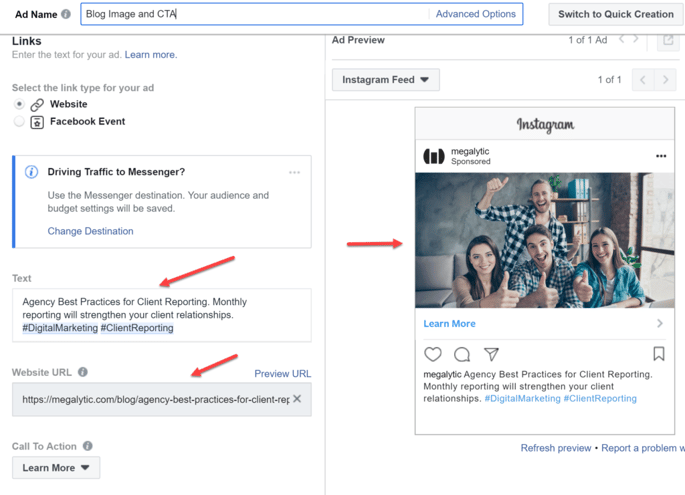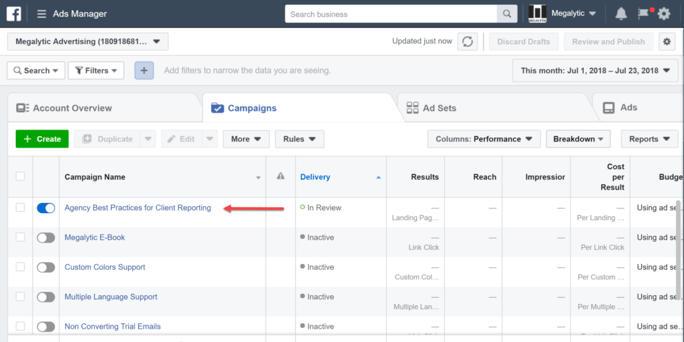May 21, 2024
How to Create Instagram Ads in Facebook Ads Manager
By Megalytic Staff - August 05, 2018
 Whether you’re a digital agency, a marketer, or a small business owner, knowing how to advertise on social media is essential to creating brand awareness and attracting new customers. If you create ads for Facebook, they may also be running on Instagram without your knowledge. That’s because, by default, ads created in Facebook Ads Manager are automatically placed on Instagram as well as Facebook.
Whether you’re a digital agency, a marketer, or a small business owner, knowing how to advertise on social media is essential to creating brand awareness and attracting new customers. If you create ads for Facebook, they may also be running on Instagram without your knowledge. That’s because, by default, ads created in Facebook Ads Manager are automatically placed on Instagram as well as Facebook.
Why Advertise on Instagram?
When it comes to social media marketing, Instagram ads, which premiered in 2016, is the new kid on the block. This means a lot of businesses don’t yet have a specific strategy for the channel. But with 800 million active users in 2017, it’s one of the largest platforms brands can use to market themselves, so you don’t want to miss out. According to Instagram , 60% of people say they’ve discovered new products on their platform, 200+ million Instagram users visit the profile of at least one business daily, and one-third of the most viewed stories are from businesses.
Not only is Instagram’s huge audience continuously growing but, when you’re looking to target a young crowd, Instagram ads are the way to go. According to Statista , over two-thirds of global Instagram users are under the age of 34.
When we look at engagement, Instagram outperforms both Facebook and Twitter by a longshot. Instagram has a far higher interaction rate , at 2.2 percent per follower compared to Facebook’s .22 percent rate. And after seeing an Instagram Story, 62% of Instagram users are more interested in a product.
If you’re wondering how these numbers can be so strong, it’s largely because Instagram allows users to reach precisely targeted audiences based on gender, age, location, and other demographics. And if you’re familiar with running Facebook Ads, since the two platforms are connected, you can easily create Instagram ads using Facebook Ads Manager without having to learn the ins and outs of a new platform.
Below, we’ll tell you exactly how to create Instagram ads using Facebook Ads Manager.
Connect Your Instagram Account to Facebook Business Manager
Before you can create an Instagram ad, you’ll need three things: a Facebook Business Page, a Facebook Business Manager account, and an Instagram account.
If you don’t have an Instagram account, you can set one up here . And if you don’t have a page for your business, you can set one up here .
Once you’ve set up your Facebook page, your next step is to connect it to your Facebook Business Manager Account. If you don’t yet have a Facebook Business Manager Account, you can follow these steps to set one up.
Now that your Business Manager account is set up, you can easily connect your Instagram account to it. To do this, within Business Manager, go to Business Settings > Instagram Accounts and click +Add
From here, you’ll enter the credentials for your business Instagram account. If you have multiple ad accounts in Business Manager, simply select the one(s) you want to use with Instagram.
Create an Instagram Ad
Now that all of your essential accounts are linked, you can start setting up your Instagram campaign. Every ad is structured within a three-level hierarchy consisting of a Campaign (top-level), an Ad Set (middle level), and the Ad. These parts all work together to ensure that your ads reach the right audience.
Your Campaign contains one or more ad sets and each campaign focuses on a single advertising objective.
To get started, from within Facebook Business Manager open Ads Manager and select the ad account that you have associated with your Instagram account. Then Click on +Create to create a new ad.
Here, you’ll notice that you have two choices: Guided Creation or Quick Creation. If you’re new to Instagram ad creation, choose Guided Creation. As the name suggests, this method will guide you through the process. (We’ve used this method in our example so you can see each step involved in creating your first ad.) Later, once you become more advanced, you can use Quick Creation to create ads more efficiently.
Pick a Marketing Objective
Next, you’ll pick a marketing objective for your ad campaign. Make sure to choose an objective that supports your current business goals. (As your business grows and changes, you can of course use different objectives.)
Here are the objectives that are currently available for Instagram ads:
- Brand Awareness : Lets new audiences know about your brand.
- Reach : Lets you target your ad to people who live near your business.
- Engagement : Allows you to boost your post so it reaches a larger number of people.
- Traffic : Drives people to visit your website or app store.
- Conversions : Encourages people to visit your website where they can make a purchase or take action.
- App Installs : Encourages people to install your mobile app.
- Video Views : Drives people to view videos on your Instagram.
- Lead Generation : Allows you to generate new leads and gather contact information.
For our example, let’s say you want to drive traffic to a recent blog post called “Agency Best Practices for Client Reporting” on your site. Select Traffic as your objective. Then choose a name for your campaign and enter it in the Campaign Name Title box. (In this case, we’ve titled the campaign after the blog we’ll promote.)
Next, set a spending limit for your campaign and enter it in the Campaign Spend Limit box. In this case, let’s say we’re experimenting to see how well Instagram works to promote our blog. We’ve set a low spending limit of $50 to get a sense of how it performs.
Create Ad Sets Within Your Campaign
Now it’s time to create ad sets within your campaign.
The Ad Set within your campaign can include one or more ads. It directs how your ad will run, including what kind of audience it will target in terms of location, gender, age and other factors. Your ad set also allows you to define a budget, a schedule, and choose placements for your ad. A single campaign may contain multiple ad sets with different targets, schedules, and budgeting.
In our example, where the objective is to drive website traffic to our blog, we’ve decided to use a single ad set for Instagram, entitled “Instagram Blog Promotion” where anyone who clicks will be directed to our website.
Our next step is to define our audience. Facebook Ads Manager provides a huge range of options for targeting the right audience. Not only can you select an audience manually, based on specific characteristics like age and location, but you can upload your contact list to connect with existing customers or prospects. Another useful tool is the ability to use your current audience’s characteristics to create “lookalike” audiences to find people you haven’t yet connected with who are similar to the people in your existing audience, who are already interested in your business’s offerings.
As an example, let’s say we want to reach people in the United States (where many Megalytic users are located) who speak English and are between the ages of 26 and 54. As you can see, when we enter this information into Facebook Ads Manager the size of that audience is 120,000,000, which is far too broad to be effective.
To narrow our audience and connect with people who will be interested in reading our blog, we need to find a way to target people who work for marketing agencies (one of our core audiences for the blog). To do this, under interests, we select Digital Marketing and then narrow our audience even further to focus on people who are also interested in the industry journal Advertising Age. Why did we choose this interest? People who are interested in digital marketing and who read industry journals are more likely to be experts in their field. These are people who have already show that they’re interested in reading about the latest industry developments, which makes them a prime audience to target for our blog.
You’ll also notice that by targeting these particular interests, we’ve narrowed down our audience to 37,000 people. This will make our ad a lot more impactful.
Now that we’ve zeroed in on our audience, we want to configure our ad to only run on Instagram. To do that, we can select “Edit Placements” and check only the Instagram options. Placements are simply the places where you want your ads to run.
Facebook Ads Manager allows you to choose manually where you want your ads to appear, or allow Facebook to place them where they’re most likely to perform well. In addition to Instagram, you can place ads on Facebook, Messenger, and Audience Network. You can also choose whether you want your ad to appear in a user’s feed (including desktop or mobile) or directly in an Instagram story. For our example ad, we’ve chosen both.
Once we’ve determined our placements, it’s time to select the budget and ad delivery optimization. Since we’re doing an experiment to find out whether our blog promotion works on Instagram, we’ll limit our spending for this ad set to $10 per day.
In terms of Ad Delivery, we have a lot of options. Optimization for Ad Delivery allows you to choose who sees your ads as well as when and where they’ll see them. You can optimize for link clicks, landing page views, impressions, or daily unique reach, depending on your goals. For our example, we picked “Landing Page Views” because we want people to click through and be able to immediately read the blog post.
Create an Ad
Now that you’ve configured your campaign and ad set for optimal performance, it’s time to create your first ad! We’ll name our example ad “Blog Image and CTA” because it will feature an image of the ad plus a call to action (or “CTA”). In the Identity box, we’ll use the Instagram business account as our identity to represent our business in the Instagram ad. And since we’ve selected a single image to represent our blog post, we’ve also chosen a single image ad.
In terms of image size, Facebook recommends 1200 x 628 pixels with little or no overlaid text. So in this case, we’ll use the same image that appears on our blog post, but without the overlay text. For our text, we’ve written a short and clear summary of the blog post. The Call to Action is “Learn More” which is appropriate for a blog post since that’s what users will be doing. And lastly, the URL (landing page) is the blog post itself.
Once you have finished creating your ad, click “Confirm.” Your new ad campaign will appear in the Facebook Ads Manager.
Conclusion
Now that you’ve learned how to create an Instagram Ad using Facebook Ads Manager, you’ll be able to expand your reach, target new audiences, and increase engagement with your website. Try running some ads on Instagram only to see how they perform - particularly if you are accustomed to running Facebook Ads. Some brands get more traction on Instagram than Facebook and some are vice-versa. The only way to find out what will work best for you is to experiment.

